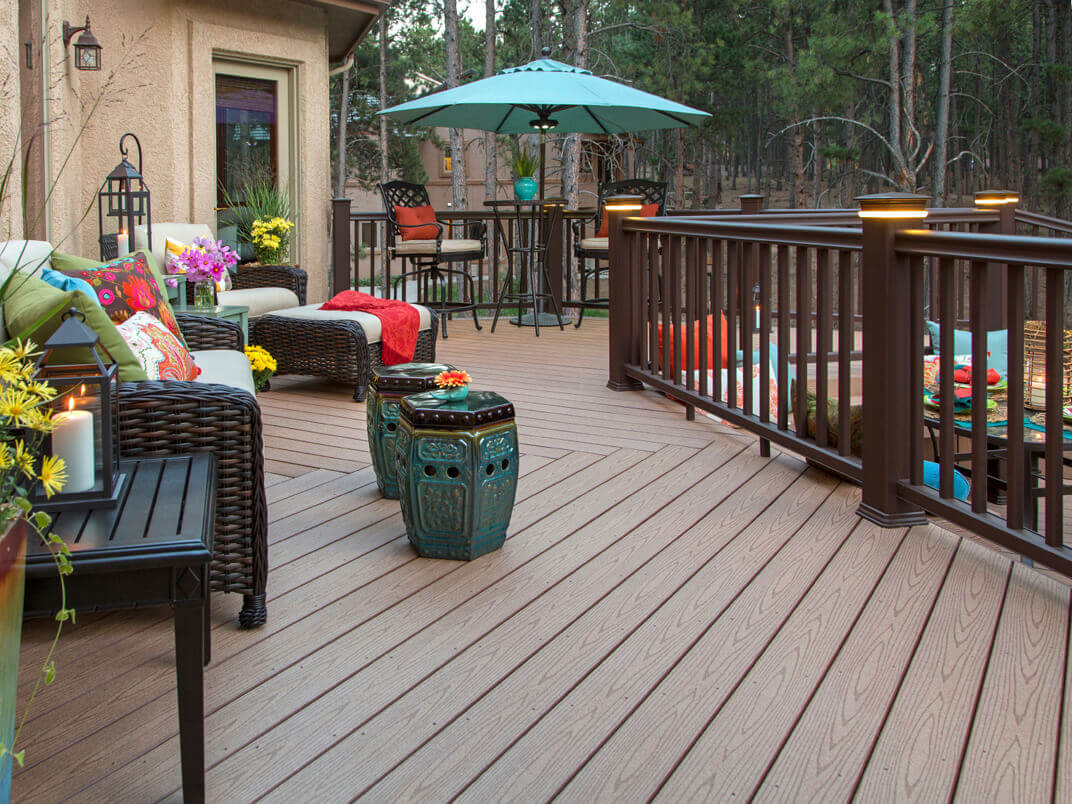
Summer is right around the corner. The sun hangs in the sky longer and you can almost smell the barbeque. Soon, you’ll be entertaining on your brand new deck. However, you have to build it first. If you build it, as a wise man once said, they will come.
Constructing your new deck requires planning – including everything from selecting the right wood for the job to planning out how the deck will be used. Whether you plan to hire a contractor or do the job yourself, there are a number of factors to consider before you get started.
Consider The Purpose
A great deck can be a place to entertain guests, quietly read a book under the sun, grill up your favorite meats and veggies, or simply enjoy some time with your family. A deck is essentially an extra room for your home – an outdoor living space with flexible functionality. Like any other room, though, space and size will limit what you can do on a deck.
Before you get started on building your dream deck, think about how you will use it most often – and what you’ll put on it. Will your deck have a grill? Extensive patio furniture? Piles of kids’ toys?
A great way to figure out how the space of your deck will work with your lifestyle is to lay out string on the ground of the estimated size of your deck, then place furniture, your grill and anything else that will have a home on your deck in that area. This exercise will help you envision what’s possible – and what’s not – on your future deck.
Consider The Rules
As every business owner and contractor knows, municipal structural codes can be complicated, confusing and often frustrating. However, rules are rules and must be followed. Before you begin construction, consult with your local municipality on the details of what you can and can’t do. Don’t just assume you can build a roof deck to get that pristine ocean view you always wanted. Chances are if your neighbors don’t have a roof deck, you probably won’t be allowed to build one either.
The construction of everything from decks to birdfeeders can be subject to regulation, but there are some types of decks that may not (and we stress may) require approval. Often, non-elevated decks – those typically less than 30” in height – are considered patios, and do not require approval or handrails. Each locale has a different set of rules, so its best to check before you begin.
Consider Simplicity
Planning your deck can really get the creative juices flowing. You’re working with the open canvas of your mind and anything seems possible – a three story deck, folding railings, electric gates – whatever your mind can conjure (including that waterslide your kids requested).
When dreaming up your deck design, the urge is almost always to “go big.” However, bigger isn’t always better. Bells and whistles are nice, but a simple, open-space deck will still provide you with a versatile solution that offers space, easy maintenance, and easy construction and planning. Of course, that doesn’t mean it needs to be plain. There are some really cool design quirks and add-ons that won’t crowd your space or bog you down in construction and planning. Beauty is in the eye of the beholder, but we find that simple and flexible garner the best results.
Consider The View
The view from your deck, of course, depends on where you build your deck and what your view looks like to begin with. Creating or maintaining a view from your deck requires you to consider a few variables (aside from code).
Positioning: While you may not have the luxury of building your deck anywhere on your house, positioning plays a key role in the atmosphere of your deck. Consider how much sunlight your deck receives from any given position. Those in desert climates may opt for more shade while coastal homes with cooler temperatures might want maximum sunlight. Also, consider nearby trees and foliage which can not only affect sunlight but expose your deck to falling leaves and debris.
Height: Elevating your deck can provide you with a beautiful view you might not have had at ground level. But elevating your deck to meet the view isn’t as simple as pressing a button. The higher your deck, the more variables apply – code, material, support structure, etc. When planning the height of your deck, always take into account how it will affect the rest of your project.
Railing: The construction style of your railing can add an extra pop to the look of your deck, but it can also obstruct your view. You won’t always be standing up when you’re enjoying your deck so think about what the view would look like if you were laying on a lounger. For deck railings with minimal visual obstruction consider cable railing.
Consider The Wood
Perhaps the most important feature of your deck is the material. The style, look, usability, construction and level of maintenance all depend on which materials you use. There are plenty of options when it comes to wood for your deck’s understructure and surface. For the understructure, Pressure Treated Lumber or steel should be your go-to.
Since your understructure will have contact with soil, it’s important to use materials that will be completely rot and insect resistant. Both Pressure Treated Lumber and steel will last for the lifetime of your deck.
For your deck’s surface, there are numerous options that are both hardy and visually pleasing. Softwoods, like Redwood and Western Red Cedar, have a natural beauty that give your deck a true outdoor feel. Softwoods require some maintenance, but can be very affordable. Composite decking, which is generally made from a combination of wood and plastic, is a cost-effective, gorgeous and virtually maintenance-free option. Hardwoods, like Mangaris and Brazilian Ipe, offer the most durable – and elegant – options for decking. While more expensive than softwoods and composite decking, a hardwood deck will surely be the envy of the neighborhood.
Consider Your Options
As you can see, there is much to consider before building your deck. If you would like to discuss your options, or just get some helpful tips, contact our stores or stop into one of our showrooms!
